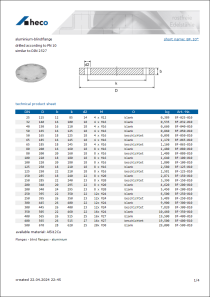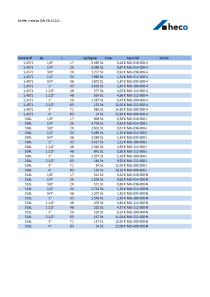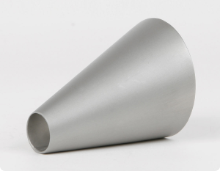
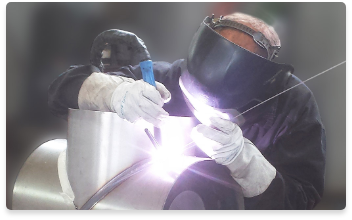
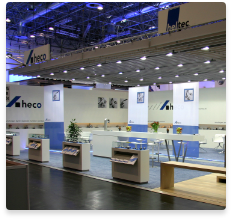
- Butt welding fittings
- bends
- T- X- Y- pieces
- T- and Y-bends
- reducers
- caps and heads
- collars
- branch saddles
- orbital fittings
- ANSI / ASME
- Industrial valves
- ball valves
- actuators
- drain cocks
- gate valves
- globe valves
- non-return valves
- Y-strainers
- control technology
- Flanges
- welding neck flanges
- threaded flanges
- blind flanges
- plate flanges
- loose plate flanges
- collars
- flange-fittings
- ANSI/ ASME
- other
- Systems
- TEEKAY
- Victaulic
- press fittings
- quick couplings
- clamp connections
- cutting rings
- DIN 11864/ DIN 11853
- railing construction
- Beverage fittings
- unions
- fittings
- pipe clamps
- Tri-Clamp
- valves & cocks
- flange connections
- inspection glasses
- filter & strainers
- spray balls

aluminium-blind flangeBF.10
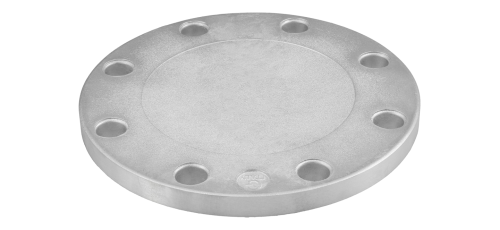


aluminium-blind flange drilled according to PN 10 similar to DIN 2527
Lightweight alloy flange
The lightweight metal flanges are manufactured using a G-ALSi12 (Cu) casting process that has both
good mechanical properties and a good resistance to corrosion
The alloy composition pursuant to DIN 1725, sheet 2, is as follows:
| Cu | Zn | Si | Fe | Ti | Ni | Mn | Mg | Pb | Sn | Al |
|---|---|---|---|---|---|---|---|---|---|---|
| 1,0% | 0,5% | 11-13,5 | 0,8% | 0,15% | 0,2% | 0,5% | 0,3% | 0,2% | 0,1% | Rest |
The mechanical properties at room temperature are as follows:
| Property | Unit | Value |
|---|---|---|
| 0.2 limit Rpo,2 | N/mm² | 90-120 |
| Tensile strength (p/B) | N/mm² | 160-240 |
| Elongation A5 | % | 1 - 4 |
| Brinell hardness | HB 5/250 | 55-75 |
| Fatigue strength | N/mm² | 70-80 |
As the thermal conductivity of lightweight alloys are three to four times higher than
those of plain carbon steel and six to eight times higher than those of creep resistant steels,
a very fast thermal absorption and thermal disippation is enabled to take place so that the
intrinsic temperature of a lightweight alloy flange can also be kept below critical values even
if the pipeline should be subjected to high surface temperatures.
Mechanical properties when subjected to higher temperatures (approximate values):
| Property | 20° C | 50° C | 100° C | 200° C |
|---|---|---|---|---|
| 0.2 limit Rpo,2 | 90 N/mm² | 80 N/mm² | 70 N/mm² | 55 N/mm² |
| Tensile strength Rm | 190 N/mm² | 180 N/mm² | 160 N/mm² | 110 N/mm² |
| Elongation A5 | 4% | 5% | 7% | 10% |
| Brinell hardness HB | 55 | 51 | 45 | 32 |
It can be stated for practical operations, that lightweight alloy flanges that are
manufactured with the dimensions of the DIN flange according to PN 10, can be used with
an operating pressure of max. 6 bar and a flange temperature of 150°C.
Higher temperatures are permissible with a lower operational figure.
Extensive tests and years of practical use have shown that with the stated operating conditions
with regard to the leakage behaviour, no differences worth mentioning could be determined between
a steel and a lightweight alloy flange.
The flange is normally supplied with a bright metal surface.
This version is fitted in lightweight alloy, stainless steel and plastic pipelines as when subjected to
a normal atmosphere, the natural casting skin (oxide layer) of the flange provides good protection
against corrosion.
When subjected to a moist atmosphere, a thick oxide layer forms that comprises two partial layers that
are on top of each other: the almost non-porous base layer and a barrier layer comprising amorphous aluminium oxide and a porous, aqueous top layer with a small proportion of crystals. A white deposit can form on
the surface of this top layer. The barrier layer that is beneath it is almost insoluble however
within a Ph range of between 4.5 and 8.0, so that in most cases, a flange with a bright metal surface
can be fitted.
The flanges are also available with an electrostatically applied and burned-in epoxy resin coating.
This version could be desirable due to the improved corrosion protection or for optical reasons .
The epoxy resin coated flanges are degreased, blasted and then burned in with an electrostatically
applied powder. During transportation, the installation of the pipeline and the screwing of the pipeline together
and the screwing of the flange together, it is to be ensured that no damage is caused, as there could otherwise
be an infiltration of the coating by corrosion to a greater extent.
extended product description
blind flanges aluminium
aluminium-blind flangeBF.10

Lightweight alloy flange
The lightweight metal flanges are manufactured using a G-ALSi12 (Cu) casting process that has both
good mechanical properties and a good resistance to corrosion
The alloy composition pursuant to DIN 1725, sheet 2, is as follows:
| Cu | Zn | Si | Fe | Ti | Ni | Mn | Mg | Pb | Sn | Al |
|---|---|---|---|---|---|---|---|---|---|---|
| 1,0% | 0,5% | 11-13,5 | 0,8% | 0,15% | 0,2% | 0,5% | 0,3% | 0,2% | 0,1% | Rest |
The mechanical properties at room temperature are as follows:
| Property | Unit | Value |
|---|---|---|
| 0.2 limit Rpo,2 | N/mm² | 90-120 |
| Tensile strength (p/B) | N/mm² | 160-240 |
| Elongation A5 | % | 1 - 4 |
| Brinell hardness | HB 5/250 | 55-75 |
| Fatigue strength | N/mm² | 70-80 |
As the thermal conductivity of lightweight alloys are three to four times higher than
those of plain carbon steel and six to eight times higher than those of creep resistant steels,
a very fast thermal absorption and thermal disippation is enabled to take place so that the
intrinsic temperature of a lightweight alloy flange can also be kept below critical values even
if the pipeline should be subjected to high surface temperatures.
Mechanical properties when subjected to higher temperatures (approximate values):
| Property | 20° C | 50° C | 100° C | 200° C |
|---|---|---|---|---|
| 0.2 limit Rpo,2 | 90 N/mm² | 80 N/mm² | 70 N/mm² | 55 N/mm² |
| Tensile strength Rm | 190 N/mm² | 180 N/mm² | 160 N/mm² | 110 N/mm² |
| Elongation A5 | 4% | 5% | 7% | 10% |
| Brinell hardness HB | 55 | 51 | 45 | 32 |
It can be stated for practical operations, that lightweight alloy flanges that are
manufactured with the dimensions of the DIN flange according to PN 10, can be used with
an operating pressure of max. 6 bar and a flange temperature of 150°C.
Higher temperatures are permissible with a lower operational figure.
Extensive tests and years of practical use have shown that with the stated operating conditions
with regard to the leakage behaviour, no differences worth mentioning could be determined between
a steel and a lightweight alloy flange.
The flange is normally supplied with a bright metal surface.
This version is fitted in lightweight alloy, stainless steel and plastic pipelines as when subjected to
a normal atmosphere, the natural casting skin (oxide layer) of the flange provides good protection
against corrosion.
When subjected to a moist atmosphere, a thick oxide layer forms that comprises two partial layers that
are on top of each other: the almost non-porous base layer and a barrier layer comprising amorphous aluminium oxide and a porous, aqueous top layer with a small proportion of crystals. A white deposit can form on
the surface of this top layer. The barrier layer that is beneath it is almost insoluble however
within a Ph range of between 4.5 and 8.0, so that in most cases, a flange with a bright metal surface
can be fitted.
The flanges are also available with an electrostatically applied and burned-in epoxy resin coating.
This version could be desirable due to the improved corrosion protection or for optical reasons .
The epoxy resin coated flanges are degreased, blasted and then burned in with an electrostatically
applied powder. During transportation, the installation of the pipeline and the screwing of the pipeline together
and the screwing of the flange together, it is to be ensured that no damage is caused, as there could otherwise
be an infiltration of the coating by corrosion to a greater extent.
This view is not optimized for mobile devices.
You can change back to desktop view.
This view is not optimized for mobile devices.
You can change back to desktop view.

